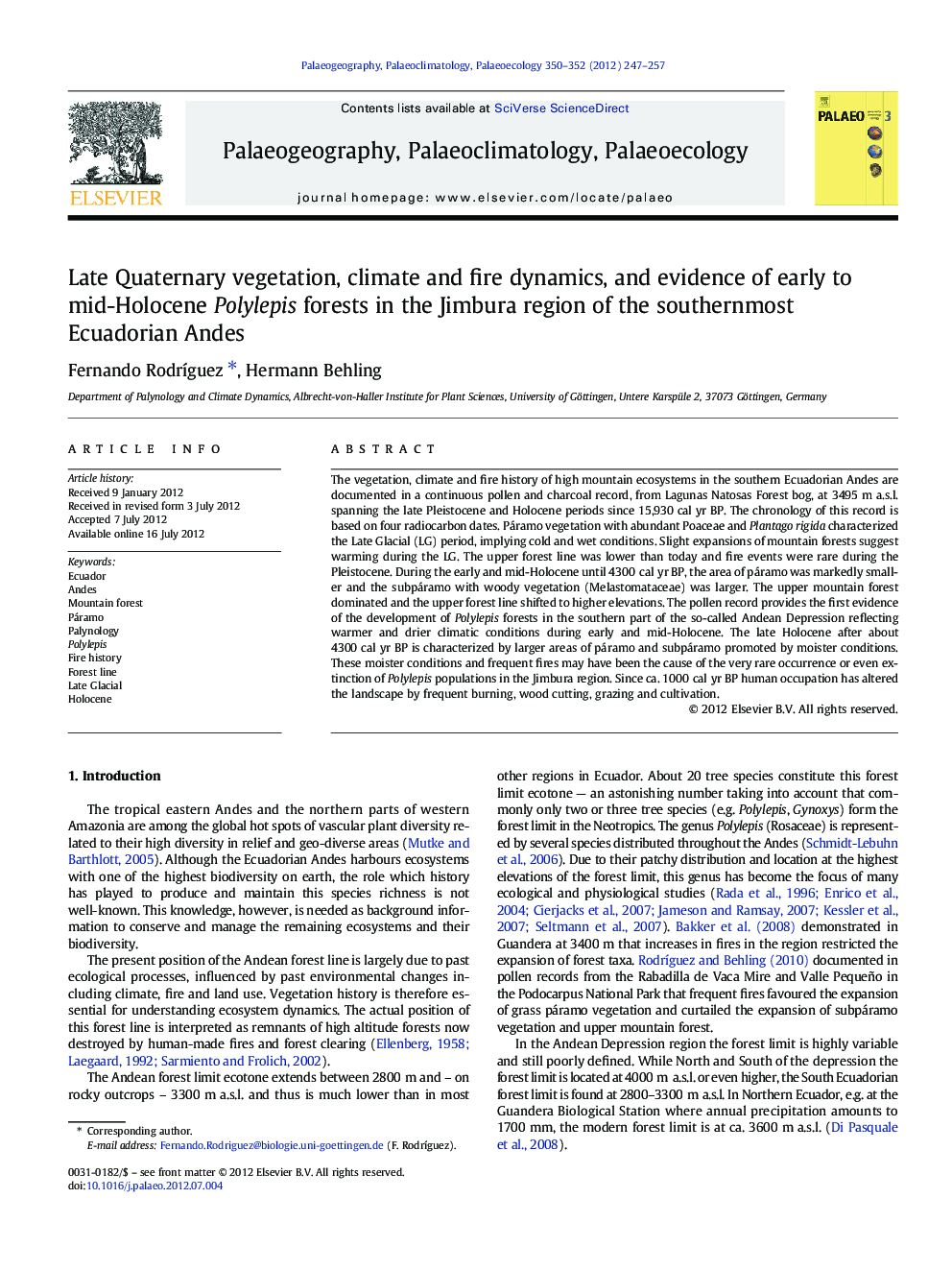| کد مقاله | کد نشریه | سال انتشار | مقاله انگلیسی | نسخه تمام متن |
|---|---|---|---|---|
| 4466833 | 1622225 | 2012 | 11 صفحه PDF | دانلود رایگان |

The vegetation, climate and fire history of high mountain ecosystems in the southern Ecuadorian Andes are documented in a continuous pollen and charcoal record, from Lagunas Natosas Forest bog, at 3495 m a.s.l. spanning the late Pleistocene and Holocene periods since 15,930 cal yr BP. The chronology of this record is based on four radiocarbon dates. Páramo vegetation with abundant Poaceae and Plantago rigida characterized the Late Glacial (LG) period, implying cold and wet conditions. Slight expansions of mountain forests suggest warming during the LG. The upper forest line was lower than today and fire events were rare during the Pleistocene. During the early and mid-Holocene until 4300 cal yr BP, the area of páramo was markedly smaller and the subpáramo with woody vegetation (Melastomataceae) was larger. The upper mountain forest dominated and the upper forest line shifted to higher elevations. The pollen record provides the first evidence of the development of Polylepis forests in the southern part of the so-called Andean Depression reflecting warmer and drier climatic conditions during early and mid-Holocene. The late Holocene after about 4300 cal yr BP is characterized by larger areas of páramo and subpáramo promoted by moister conditions. These moister conditions and frequent fires may have been the cause of the very rare occurrence or even extinction of Polylepis populations in the Jimbura region. Since ca. 1000 cal yr BP human occupation has altered the landscape by frequent burning, wood cutting, grazing and cultivation.
► Vegetation, climatic and fire history based on fossil pollen and charcoal data
► Lagunas Natosas Forest bog (3495 m a.s.l.) sediment spanning the last 15,930 years
► Changing climatic conditions are largely responsible for vegetation changes
► Polylepis abundant during early and mid‐Holocene and rare during the late Holocene
► Human influence changed the landscape during the late Holocene
Journal: Palaeogeography, Palaeoclimatology, Palaeoecology - Volumes 350–352, 15 September 2012, Pages 247–257